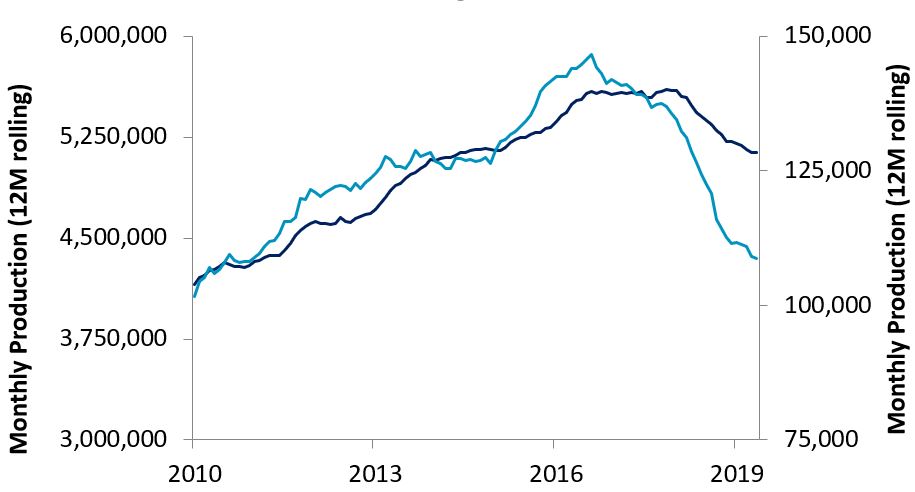
Some car manufacturers still believe there will be another peak around 2025 based on emerging markets in Asia. More likely consumers in these markets will take after their pers in the US and Europe. They may not even have a driver’s license and may also have adopted urban mobility solutions like Über and Lyft or electric scooters.
Worldwide, residents are migrating to megacities—expected to be home to two-thirds of the global population by midcentury—where an automobile can be an expensive inconvenience. Young people continue to turn away from cars, with only 26 percent of U.S. 16-year-olds earning a driver’s license in 2017, a rite of passage that almost half that cohort would have obtained just 36 years ago, according to Sivak Applied Research. Likewise, the annual number of 17-year-olds taking driving tests in the U.K. has fallen 28 percent in the past decade. This is what peak car look like, Bloomberg Businessweek
It could well be that we passed the peak in global automotive production.
Volkmar Denner, CEO Robert Bosch GmbH
The Worlds largest car part manufactorer
The industry change will have a “significant impact on employment,” Denner said. “We need 10 associates to manufacture a diesel injection system, three for a gasoline system, and one for an electric motor,”.
Bosch’s earnings before interest and tax almost halved to “about 3 billion euros” ($3.3 billion), according to preliminary figures for 2019. The profit margin eroded to “just under 4%” return on sales from 7% in the previous year.
‘Peak Car’ May Be Past, German CEO Says, Hyperdrive Bloomberg




10 Comments
Pingback: Can you think of a less efficient way to transport people through your city than cars? - Bergensia
Pingback: altogel rtp
Pingback: รถเช่าในญี่ปุ่นพร้อมคนขับ
Pingback: ส่งsms
Pingback: คลินิกเสริมความงาม
Pingback: dark168
Pingback: slot99
Pingback: ostheimer
Pingback: เพิ่มยอดไลค์ Facebook
Pingback: trusted link